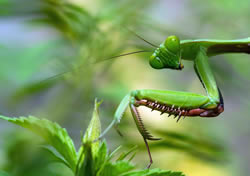Avery Thompson* says that instead of basing artificial intelligence on humans, the US military is experimenting with something a lot simpler.

Photo: David Clode
The military wants artificial intelligence (AI), but it’s not intending to cook it up from scratch.
Instead, in a recent solicitation, the Defense Advanced Research Projects Agency (DARPA) asked for proposals to build AI based on insect brains.
The program seeks to build AI that is smaller and more efficient than normal software.
Unlike us, insects operate almost entirely based on simple stimuli.
Moths, for instance, are so programmed to navigate based on the direction of light that they occasionally navigate directly into lightbulbs.
While these sorts of basic rules can sometimes backfire, they’re also incredibly simple and easy to implement, which is what makes them useful to the military.
This type of research was initially developed in the 1980s at MIT by roboticist Rodney Brooks, who developed a number of robots based on this principle.
Perhaps the most successful was a robot named Herbert, which could autonomously move around the office and collect empty soft drink cans.
Herbert was able to avoid obstacles, identify and pick up cans, and drop them in a recycling bin by relying on only 15 simple rules.
Herbert’s greatest strength was that it required very little processing power or memory to operate.
Instead of an internal map of the office and a complex suite of sensors to navigate the environment, Herbert’s insect-like programming let it perform the same tasks more efficiently.
Herbert existed long before the advent of machine learning, but the same principles apply to modern AI.
Insect-like AI could be used to perform simple tasks cheaply, and another advantage here is that training neural networks should happen much faster.
DARPA’s program will launch on 3 April.
* Avery Thompson is a reporter at Popular Mechanics. He tweets at @PhysicallyAvery. His website is averythompson.net.
This article first appeared at www.popularmechanics.com.





